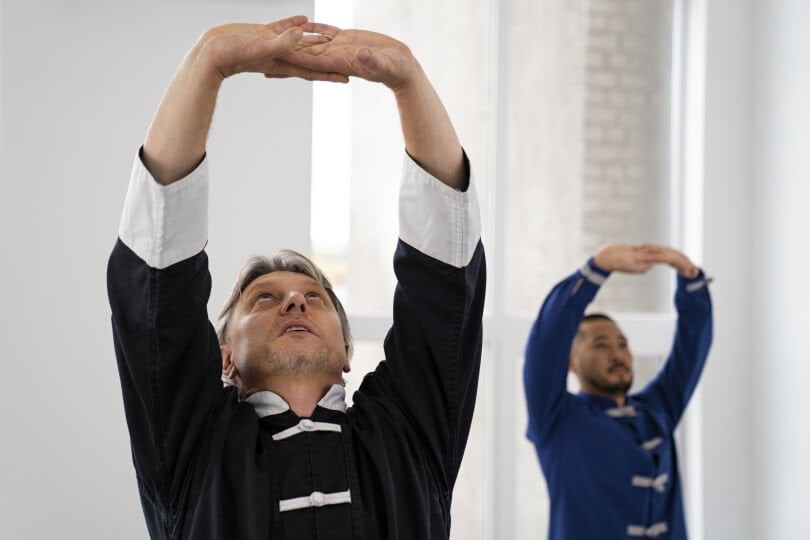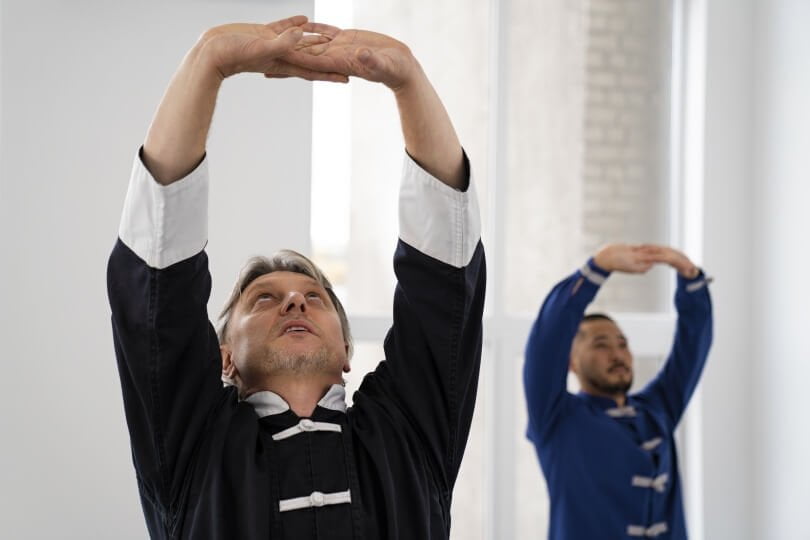Table of Contents
Harnessing the Power of the Subconscious Mind

Understanding the Subconscious Mind
Understanding the workings of the subconscious mind offers invaluable insights for overcoming anxiety and mastering anxiety alleviation techniques. By delving into the mechanisms of the subconscious mind, we unlock the potential for effective panic management and sustained emotional health.
The subconscious mind operates as a vast repository storing memories, habits, and emotions. Unlike the conscious mind, which processes deliberate thoughts and decisions, the subconscious mind works behind the scenes, influencing our perceptions and behaviors without us being fully aware.
- It processes information millions of times faster than the conscious mind.
- It’s responsible for our automatic bodily functions and instinctive reactions.
- It can store and bring forth deeply embedded memories, both positive and negative.
How the subconscious mind differs from the conscious mind
While the conscious mind handles analytical and logical reasoning, the subconscious mind governs our emotional responses. For instance, the fight-or-flight reaction to perceived danger is an automatic response orchestrated by the subconscious. It does not distinguish between real threats and imagined fears, which often contributes to anxiety and panic attacks.
A practical example of the subconscious mind’s influence can be showcased through the iceberg metaphor. Imagine the mind as an iceberg: the small visible part represents the conscious mind, while the vast submerged portion embodies the subconscious. This hidden part underpins our daily life, dictating unspoken biases, fears, and unexpressed desires.
- Unresolved anxieties can manifest in physical symptoms like headaches or digestive issues.
- Positive self-affirmations can gradually reprogram the subconscious to foster self-esteem and confidence.
- Practices such as meditation can facilitate access to the subconscious, allowing for profound emotional healing.
The role of the subconscious mind in emotional regulation
Our emotional landscape is largely sculpted by the subconscious mind. By employing subconscious techniques, we can significantly enhance anxiety alleviation and panic management. For example, visualization exercises help in imprinting calming images and scenarios onto the subconscious. This active engagement trains the mind to adopt more relaxed and composed responses amidst stress.
Understanding and harnessing the power of the subconscious mind reveals pathways toward emotional balance and mental clarity. This exploration not only mitigates anxiety but also empowers us to lead a more fulfilling life.
Accessing Your Subconscious for Emotional Balance
Accessing and harnessing the power of the subconscious mind can be instrumental in overcoming anxiety and improving one’s emotional balance. Subconscious techniques such as meditation, hypnosis, and visualization offer effective means for anxiety alleviation and panic management. These methods allow individuals to delve deeper into their minds, uncovering hidden thoughts and emotions that shape their behaviors and mental states.
One of the most accessible techniques for tapping into the subconscious mind is meditation. By encouraging a state of relaxation and heightened awareness, meditation provides a pathway for individuals to access inner thoughts and feelings often buried beneath the surface. Through regular practice, one can begin to notice patterns and triggers that contribute to anxiety, ultimately paving the way for conscious intervention and behavior modification.
- Meditation promotes a state of deep relaxation, reducing stress and anxiety levels.
- It enhances self-awareness, allowing individuals to identify and understand subconscious thoughts.
- Provides a foundation for integrating new, positive thought patterns.
Hypnosis as a Tool for Subconscious Exploration
Hypnosis is another powerful technique for accessing the subconscious mind. Under guided hypnosis, individuals enter a trance-like state where the conscious mind’s defenses are lowered, allowing direct communication with the subconscious. This method can be particularly effective for panic management as it enables the individual to reframe negative thought patterns that fuel anxiety. Through repeated hypnosis sessions, one can replace harmful subconscious messages with empowering, positive beliefs.
Visualization, another valuable tool, involves the creation of mental images to influence the subconscious mind. This technique works by simulating positive outcomes and desired behaviors, effectively convincing the subconscious that such scenarios are achievable. Visualization can assist in anxiety alleviation by allowing individuals to mentally rehearse coping mechanisms and solutions to stressful situations.
Practical examples of these techniques bring theoretical concepts to life. Consider guided meditation as an intervention for anxiety. Audio guides lead individuals through calming scenes and positive affirmations, helping to identify and alter subconscious thought patterns contributing to anxiety. Over time, this practice can significantly reduce the frequency and intensity of anxious episodes.
- Guided meditation offers step-by-step instruction, making the practice accessible to beginners.
- It encourages a routine that fosters ongoing self-awareness and emotional regulation.
- Audio guides provide structure, facilitating a deeper and more focused meditative state.
Essential Tools for Self-Awareness and Introspection
Incorporating tools such as journaling alongside these subconscious techniques can enhance self-awareness and introspection. Journaling specific thoughts and feelings immediately after meditation, hypnosis, or visualization sessions can provide insights into recurring patterns and triggers of anxiety. Over time, this practice cultivates a deeper understanding of the subconscious mind’s role in emotional responses, amplifying the effectiveness of anxiety alleviation strategies.
Ultimately, the journey to emotional balance begins with exploring and understanding the subconscious mind. Techniques like meditation, hypnosis, and visualization, bolstered by tools for self-awareness and introspection, offer powerful avenues for overcoming anxiety and achieving lasting mental well-being. By regularly engaging in these practices, individuals can rewire their subconscious minds to support more positive and adaptive responses to life’s challenges.
Subconscious Techniques for Overcoming Anxiety

Reprogramming Negative Thought Patterns
Understanding cognitive distortions and their subconscious roots is essential for overcoming anxiety, utilizing subconscious techniques, and achieving anxiety alleviation. Cognitive distortions are irrational thought patterns that often persist beneath our conscious awareness, deeply embedded within the subconscious mind. These distortions can fuel negative emotions such as panic and anxiety.
Research in cognitive psychology reveals that the subconscious mind plays a crucial role in shaping our perceptions and responses to the world. Cognitive distortions like catastrophizing, overgeneralization, and black-and-white thinking often stem from early life experiences and subconscious programming. For example, a child who experiences frequent criticism may internalize a belief that they are fundamentally flawed, a notion that can persist into adulthood and manifest as chronic anxiety.
Identifying and replacing negative beliefs is a fundamental step in reprogramming the subconscious mind. The process begins with heightened self-awareness and mindfulness. Paying close attention to one’s thoughts and feelings can help uncover subconscious distortions. Engaging in reflective practices such as journaling provides insight into recurring patterns of negative thinking.
- Self-awareness and mindfulness to recognize irrational thoughts.
- Journaling as a reflective tool to identify negative patterns.
- Adopting healthier beliefs through positive affirmations and visualization.
Practical example: Cognitive-behavioral techniques for reprogramming anxiety-inducing thoughts
Cognitive-behavioral techniques (CBT) have proven effective in addressing and transforming anxiety-inducing thoughts. Consider the case of someone who frequently experiences panic in social situations. This person might harbor a subconscious belief that others are always judging them harshly.
In CBT, one begins by challenging the validity of these thoughts. Techniques like cognitive restructuring help individuals dissect and dispute irrational beliefs. For instance, they might ask themselves for evidence that supports or refutes their fears of judgment, often finding that their anxieties are unfounded. Additionally, exposure therapy, another CBT technique, gradually desensitizes individuals to anxiety-provoking situations by exposing them to their fears in a controlled manner.
Implementing these strategies:
- Challenging irrational beliefs through cognitive restructuring.
- Utilizing exposure therapy to reduce sensitivity to triggers.
- Adopting relaxation techniques like deep breathing and mindfulness exercises to manage panic.
By reprogramming the subconscious mind, one can effectively mitigate anxiety and foster a healthier mental outlook.
Building Resilience Through Subconscious Conditioning
Building resilience through subconscious conditioning is a profound and effective approach to overcoming anxiety. By leveraging subconscious techniques, individuals can achieve anxiety alleviation and better panic management. Let’s explore how positive affirmations and other techniques can impact the subconscious mind.
Positive affirmations are simple yet powerful statements that, when repeated consistently, can reprogram the subconscious mind to focus on empowering beliefs and attitudes. Scientific studies have demonstrated how positive affirmations can lead to reduced stress levels and increased personal resilience. The subconscious mind absorbs these affirmations, gradually transforming one’s mental state from negative to positive.
- Athletes often use affirmations to enhance performance, repeating phrases such as “I am strong and capable” to build mental resilience.
- Studies have shown that affirmations can improve academic performance by enhancing students’ belief in their capabilities.
- Practicing affirmations can help individuals manage anxiety by reinforcing self-worth and reducing panic responses.
Techniques to Instill a Resilient Mindset
There are several subconscious techniques that can foster a resilient mindset. Two of the most effective are anchoring and visual imagery. Anchoring involves creating a physical trigger that, when activated, brings about a desired emotional state. For example, pressing a thumb and forefinger together while thinking of a calming memory can serve as an anchor to reduce panic during stressful situations.
Visual imagery, on the other hand, uses the imagination to create vivid mental images of positive outcomes. This technique helps the subconscious mind to “practice” successful scenarios, thus increasing confidence and reducing anxiety.
- A student might use visual imagery by vividly imagining acing an upcoming exam, boosting confidence and reducing test anxiety.
- Performers can visualize a successful performance to overcome stage fright.
- Professionals may use anchoring to calmly handle high-pressure presentations, managing panic and performing optimally.
Practical Example: Daily Affirmation Practices
Incorporating daily affirmations into your routine is a practical way to build confidence and reduce panic responses. Start with simple, positive statements that resonate deeply with you. Repeat these affirmations consistently, ideally first thing in the morning and before bed.
Consider the following examples:
- “I am in control of my emotions and can handle any situation.”
- “Every challenge I face is an opportunity to grow stronger.”
- “I am confident in my abilities and trust myself fully.”
By integrating these practices, the subconscious mind begins to accept these beliefs as true, leading to significant improvements in anxiety alleviation and panic management. Consistent use of affirmations and other subconscious techniques can transform a once anxious mindset into one of resilience and confidence.
Summary
Understanding the workings of the subconscious mind offers invaluable insights for overcoming anxiety and mastering anxiety alleviation techniques. By delving into the mechanisms of the subconscious mind, we unlock the potential for effective panic management and sustained emotional health.
The subconscious mind operates behind the scenes, influencing our perceptions and behaviors without us being fully aware. It processes information millions of times faster than the conscious mind and is responsible for our automatic bodily functions and instinctive reactions. It can store and bring forth deeply embedded memories, both positive and negative.
- Unresolved anxieties can manifest in physical symptoms like headaches or digestive issues.
- Positive self-affirmations can gradually reprogram the subconscious to foster self-esteem and confidence.
- Practices such as meditation can facilitate access to the subconscious, allowing for profound emotional healing.
The role of the subconscious mind in emotional regulation
Our emotional landscape is largely sculpted by the subconscious mind. Techniques such as meditation, hypnosis, and visualization offer effective means for anxiety alleviation and panic management. Meditation provides a pathway to access inner thoughts and feelings often buried beneath the surface.
- Meditation promotes a state of deep relaxation, reducing stress and anxiety levels.
- It enhances self-awareness, allowing individuals to identify and understand subconscious thoughts.
- Provides a foundation for integrating new, positive thought patterns.
Hypnosis allows direct communication with the subconscious, enabling individuals to reframe negative thought patterns. Visualization creates mental images to influence the subconscious mind, imprinting calming images and scenarios.
- Athletes use affirmations to build mental resilience, such as “I am strong and capable.”
- Affirmations can improve academic performance by bolstering students’ belief in their abilities.
- Practicing affirmations can help manage anxiety by reinforcing self-worth.
Techniques to Instill a Resilient Mindset
Techniques like anchoring and visual imagery foster a resilient mindset. Anchoring creates a physical trigger linked to a desired emotional state, such as pressing thumb and forefinger together to reduce panic. Visual imagery involves imagining positive outcomes, which increases confidence and reduces anxiety.
- A student might visualize acing an upcoming exam to boost confidence.
- Performers can visualize a successful performance to overcome stage fright.
- Professionals may use anchoring to calmly handle high-pressure presentations.
In summary, understanding and harnessing the power of the subconscious mind reveals pathways toward emotional balance and mental clarity. Techniques such as meditation, hypnosis, and visualization offer powerful avenues for overcoming anxiety and achieving lasting mental well-being.
FAQ – Subconscious Techniques for Overcoming Anxiety
How can visualization techniques help in reducing anxiety and panic using the subconscious mind?
Visualization techniques can help reduce anxiety and panic by engaging the subconscious mind in creating positive mental images, which in turn can overwrite negative thought patterns. By consistently visualizing oneself in a calm and controlled state, individuals can train their subconscious to default to these positive scenarios, thereby decreasing the frequency and intensity of anxious or panicked responses. For example, picturing oneself in a peaceful, safe environment can evoke a physical sense of calm, interrupting the cycle of anxiety.
How can visualization techniques help in reducing anxiety and panic through subconscious mind engagement?
Visualization techniques work by engaging the subconscious mind to create a sense of calm and control, allowing individuals to replace anxious or panicky thoughts with more positive and soothing mental images. This practice can effectively reduce physical symptoms of anxiety by conditioning the mind and body to respond more calmly to stressors. Through regular visualization, the brain can be trained to form new neural pathways that prioritize relaxation and emotional stability.
How can visualization techniques tap into the subconscious mind to reduce anxiety and panic?
Visualization techniques can calm the subconscious mind by creating a mental image of a safe and peaceful place, which in turn decreases anxiety and panic. By repeatedly immersing oneself in this positive imagery, the brain begins to associate these calming scenarios with real-life relaxation, altering emotional responses. This practice leverages the brain’s neuroplasticity, gradually replacing stress-inducing thought patterns with serene ones.




